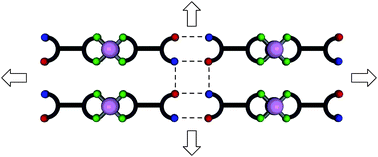Combination of primary amide and dipyrrin for the elaboration of extended architectures built upon both coordination and hydrogen bonding†
Abstract
The 5-(benzamide)dipyrrin, a ditopic tecton bearing two different interaction poles, i.e. a

* Corresponding authors
a
Laboratoire de Chimie de Coordination Organique (UMR CNRS 7140), Université de Strasbourg, Institut Le Bel, 4 rue Blaise Pascal, Strasbourg, France
E-mail:
sbaudron@chimie.u-strasbg.fr, hosseini@chimie.u-strasbg.fr
Fax: +33390241325
Tel: +33 390241323
The 5-(benzamide)dipyrrin, a ditopic tecton bearing two different interaction poles, i.e. a

 Please wait while we load your content...
Something went wrong. Try again?
Please wait while we load your content...
Something went wrong. Try again?
S. A. Baudron, D. Salazar-Mendoza and M. W. Hosseini, CrystEngComm, 2009, 11, 1245 DOI: 10.1039/B901167F
To request permission to reproduce material from this article, please go to the Copyright Clearance Center request page.
If you are an author contributing to an RSC publication, you do not need to request permission provided correct acknowledgement is given.
If you are the author of this article, you do not need to request permission to reproduce figures and diagrams provided correct acknowledgement is given. If you want to reproduce the whole article in a third-party publication (excluding your thesis/dissertation for which permission is not required) please go to the Copyright Clearance Center request page.
Read more about how to correctly acknowledge RSC content.
 Fetching data from CrossRef.
Fetching data from CrossRef.
This may take some time to load.
Loading related content
